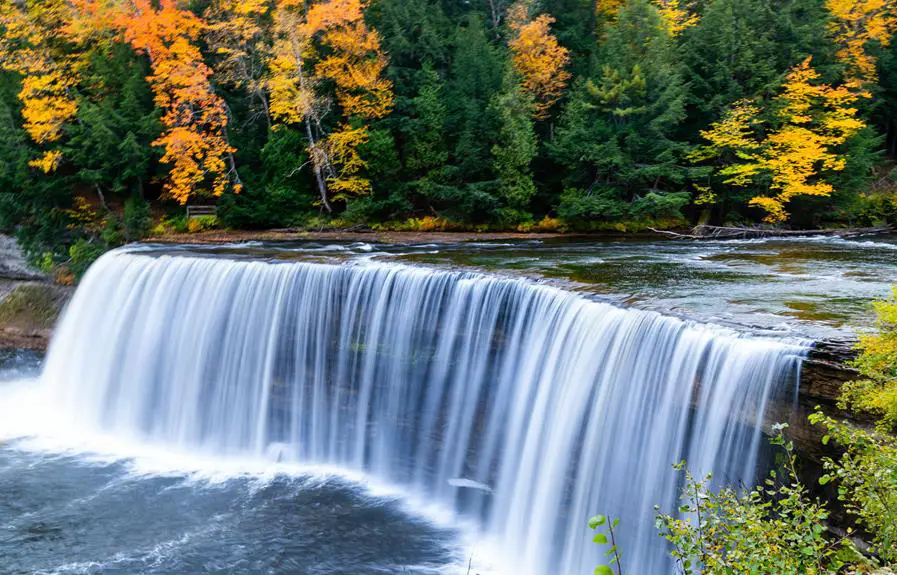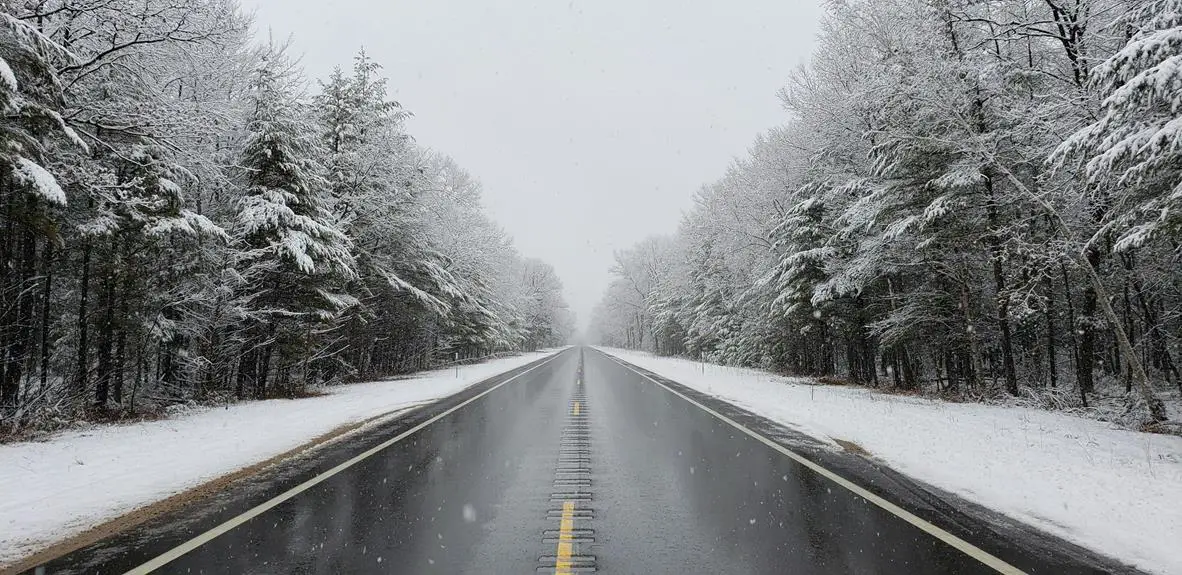Nestled in the heart of the Great Lakes region, Mackinac Island holds a rich cultural heritage that extends far beyond its picturesque landscapes and unique charm. While the island’s name may seem straightforward, mastering its pronunciation is an art form in itself, revealing insights into the island’s intriguing history and the people who have called it home. To truly immerse yourself in the essence of Mackinac, understanding the nuances behind its nomenclature is an essential first step. By delving into the linguistic evolution of this enchanting destination, you’ll uncover a deeper connection to the island’s past and the vibrant communities that have shaped its enduring legacy.
Native American Origins and Mackinac Island
Today Mackinac Island resorts dot the car-free streets of the island. However, Mackinac Island’s rich history is deeply rooted in the cultural heritage of its indigenous inhabitants, the Anishinaabek people, who have long recognized the island’s significance as a ‘place of the great turtle.’
The island’s name, derived from the Anishinaabek term ‘Michilimackinac,’ reflects this profound connection to Native American traditions. The limestone bluffs of Mackinac Island, which are said to resemble a giant turtle emerging from the water, further emphasize the island’s cultural significance to the Anishinaabek.
For centuries, the Odawa and other indigenous cultures have called Mackinac Island home, making it a historically rich site for the preservation of Native American heritage.
Today, visitors to the island can immerse themselves in this rich legacy through educational resources, such as cultural history trails and field trips, which offer insights into the enduring influence of Anishinaabek culture on the island’s past and present.
Mackinac Island stands as a living representation of the resilience and traditions of its Native American inhabitants.
French Influence on Mackinac Island
The French left an indelible mark on the cultural landscape of Mackinac Island.
The early settlement patterns and architectural styles found on the island reflect the period of French colonization and their influence in the region.
The French adaptation of the name ‘Michilimackinac’ also provides insight into how the area’s heritage was shaped by cultural exchanges between French settlers and Native Americans.
Early French Settlement
French colonial footprints dotted the landscape of Mackinac Island, as early settlers established a lasting cultural imprint through their architectural preferences and patterns of habitation. The establishment of Fort Michilimackinac in 1715 marked a pivotal moment, as this French outpost became a central hub for the Great Lakes fur trade. The intermingling of French and Native American cultures fostered intriguing cultural exchanges, shaping the unique character of the region.
The French architectural style is evident in the island’s early buildings and infrastructure, showcasing their lasting influence. This legacy manifests in:
- The picturesque design of historic structures, echoing the aesthetic sensibilities of the French settlers.
- The strategic placement of homes and settlements, reflecting the French’s pragmatic approach to land use.
- The linguistic evolution of the name ‘Michilimackinac,’ as the French adapted it to fit their pronunciation, incorporating silent letters.
This rich tapestry of early French settlement continues to captivate visitors and historians alike, offering a glimpse into the formative years of Mackinac Island’s storied past.
Fur Trade Prominence
Fueled by the lucrative fur trade, the strategic location of Mackinac Island elevated it to prominence as a central hub for commercial activities among diverse cultural groups in the region. The establishment of Fort Michilimackinac by the French in 1715 marked the beginning of this thriving economic center, as it served as a crucial point for the fur trade in the Great Lakes. Cultural exchanges between the French settlers and Native American tribes greatly shaped the trade practices and settlement patterns in the area.
The fur trade at Fort Michilimackinac created a bustling economy that attracted both French and Native American traders, solidifying the historical importance of the region. Mackinac Island’s advantageous position along key trading routes facilitated commerce among various tribes and European settlers, further cementing its status as a commercial epicenter.
The success of the fur trade at this crossroads of cultures underscores the profound influence it had on the early development and prosperity of the Mackinac region.
Architectural Influences
Evident in the island’s historic structures, the French colonial architectural influence persists as a defining characteristic of Mackinac Island’s built environment. The island’s architectural styles showcase the adaptation of early French designs to the local climate and resources, evoking the cultural exchanges that shaped the region.
Three key aspects of this French influence can be observed:
- The iconic white-washed, pastel-colored buildings with steep, slanted roofs are reminiscent of traditional French colonial structures, providing a charming and picturesque ambiance throughout the island.
- The use of locally sourced materials, such as the distinctive Mackinac limestone, in conjunction with French construction techniques, has resulted in a harmonious integration of the built and natural environments.
- Decorative elements, including dormers, shutters, and ornate chimneys, further accentuate the French flair that permeates Mackinac Island’s historic architectural landscape.
This enduring French built legacy serves as a tangible reflection of the profound cultural impact of the island’s early settlers and their interactions with the Native American communities.
British Influence on Mackinac Island
Throughout the late 18th and early 19th centuries, the British influence on Mackinac Island became increasingly pronounced, leaving an indelible mark on the region’s history and cultural landscape. The seizure of Fort Michilimackinac in 1761 and its subsequent relocation to Mackinac Island in 1781 marked a significant shift in control of the area. The British military presence at Fort Mackinac cemented the island’s strategic importance during the American Revolutionary War and the War of 1812, with two battles fought for its control.
| Year | Event | Impact |
|---|---|---|
| 1761 | British seized Fort Michilimackinac | Marked a shift in control of the area |
| 1781 | Fort Michilimackinac relocated to Mackinac Island | Mackinac Island became a crucial military outpost |
| 1812 | Two battles fought for control of Fort Mackinac | Solidified the island’s strategic importance |
Today, the historical significance of Fort Mackinac is recognized through the island’s designation as a National Historic Landmark, preserving its rich British heritage for generations to come.
Mackinac Names
The Mackinac name, derived from its Native American origins, has undergone various spelling adaptations over time.
While the spelling may differ, the local pronunciation remains consistent, highlighting the cultural significance of the name.
Understanding the nuances of ‘Mackinac’ and ‘Mackinaw’ is essential for traversing the region’s rich history and geography.
Spelling Variations Abound
Spelling variations of the name ‘Mackinac’ abound throughout the region, reflecting the complex linguistic history and diverse cultural influences that have shaped this iconic Michigan destination. From ‘Mackinac’ to ‘Mackinaw,’ the differing spellings can be a source of confusion for both visitors and locals alike.
The consistent pronunciation of ‘Mackinaw,’ however, helps to unify the various written forms, allowing for a seamless understanding of the region’s identity.
Three notable examples that showcase this linguistic evolution include:
- The Straits of Mackinac, a significant maritime passage linking Lake Michigan and Lake Huron, which has been documented with various spellings over time.
- The United States Coast Guard Cutter Mackinaw, a vessel named after the region, preserving the historical ‘Mackinaw’ spelling.
- Historical references to ‘Mishinimakinago’ and ‘Missilimakinak,’ highlighting the linguistic diversity that has shaped the area’s nomenclature.
Understanding these spelling variations is essential for visitors seeking to navigate the region with confidence and connect with the rich cultural heritage of Mackinac.
Correct Pronunciation Matters
Proper pronunciation of the iconic Mackinac name is paramount for visitors seeking to engage authentically with this renowned Michigan destination. The name’s origins trace back to the Native American term ‘Michilimackinac,’ meaning ‘Great Turtle,’ and this rich history is preserved in the local pronunciation of ‘Mack-i-naw.’
While various spelling variations, such as ‘Mackinaw’ and ‘Mackinac City,’ may appear, the correct pronunciation remains consistent, emphasizing the ‘aw’ sound. This linguistic nuance reflects the area’s storied past, from its time as a French settlement to its role as a strategic location for the British at historic Fort Mackinac.
Mispronunciations like ‘Mack-i-nack’ can be jarring for locals and detract from the visitor’s immersion in the region’s cultural heritage. By mastering the proper way to say ‘Mackinac,’ travelers demonstrate respect for the community and enhance their overall experience in this picturesque Michigan destination.
Turtles on Mackinac Island
Turtles hold a significant place in the history and culture of Mackinac Island, with the Anishinaabek name Michilimackinac directly translating to ‘place of the great turtle.’ This deep-rooted connection is evident in the island’s landmark attractions, local businesses, and community celebrations.
The Great Turtle Park, for instance, features various turtle-themed installations and exhibits that captivate visitors and honor the island’s heritage. Local enterprises, such as the Great Turtle Brewery and Great Turtle Kayak Tours, further embrace the turtle symbolism in their names, showcasing the community’s reverence for this revered creature.
Additionally, the annual Great Turtle Drop event on New Year’s Eve has become a cherished tradition, where the island’s residents and guests gather to witness the lowering of a giant turtle sculpture, celebrating Mackinac’s turtle-themed legacy.
This enduring cultural significance is a reflection of the profound impact turtles have had on the island’s identity, rooted in the rich Ojibwe language and history.
Pronunciation of Mackinac and Mackinaw
Regardless of the spelling, the names ‘Mackinac’ and ‘Mackinaw’ are both pronounced identically, with the emphasis placed on the ‘i’ sound, resulting in the familiar pronunciation of ‘Mack-i-naw.’ This common pronunciation honors the island’s rich history and cultural heritage, dating back to its Native American roots.
The evolution of the name from the Anishinaabek ‘Michilimackinac’ to its modern forms reflects the influence of various cultures that have called the region home. The French adaptation, with its silent letters, and the British shortening to ‘Mackinac’ have shaped the pronunciation we use today.
To help illustrate the nuances of Mackinac pronunciation, consider the following table:
| Pronunciation | Spelling |
|---|---|
| ‘Mack-i-naw’ | Mackinac |
| ‘Mack-i-naw’ | Mackinaw |
| ‘Mack-i-nack’ | Incorrect |
Historical Significance
Mackinac Island’s strategic location in the Great Lakes made it a key center for the fur trade, profoundly influencing regional commerce and culture from its early days. The island’s historical significance is further underscored by its designation as a National Historic Landmark, preserving its rich cultural and military heritage.
Fort Mackinac, originally built by the British in 1781, has been the site of two vital battles that shaped U.S. territorial acquisition strategies. This fortification played a significant role during the American Revolutionary War and the War of 1812, highlighting the island’s importance in military operations.
The island’s historical legacy is deeply intertwined with the Indigenous cultures, particularly the Odawa, who have inhabited the region for centuries. Their contributions have woven an intricate tapestry of cultural significance that is integral to the story of Mackinac Island and the Upper Peninsula of Michigan.
Frequently Asked Questions
How Do Locals Pronounce Mackinac?
Locals pronounce “Mackinac” as “Mack-i-naw,” reflecting its Native American origins. The pronunciation remains consistent across the region, despite variations in spelling, highlighting the cultural significance of accurately pronouncing the name.
Who Owns Most of Mackinac Island?
The majority of Mackinac Island is owned by the State of Michigan, which manages its natural and historical resources as a state park. A significant portion of commercial land is also owned by local families and business owners who contribute to the island’s tourism economy.
What Tribe Is the Mackinac Indian?
The Mackinac Island area has been historically significant to the Odawa tribe, part of the Anishinaabek peoples, who have maintained a cultural presence in the region for centuries and continue to promote their heritage through various initiatives.
Is There a Difference Between Mackinaw and Mackinac?
Yes, there is a difference between Mackinac and Mackinaw. Mackinac generally refers to the island, while Mackinaw is more commonly used for the city and the bridge connecting Michigan’s Upper and Lower Peninsulas. The spellings reflect the region’s diverse cultural influences.






